Giant Defy Advanced Pro 2 AX review
Great value, fast and highly comfortable
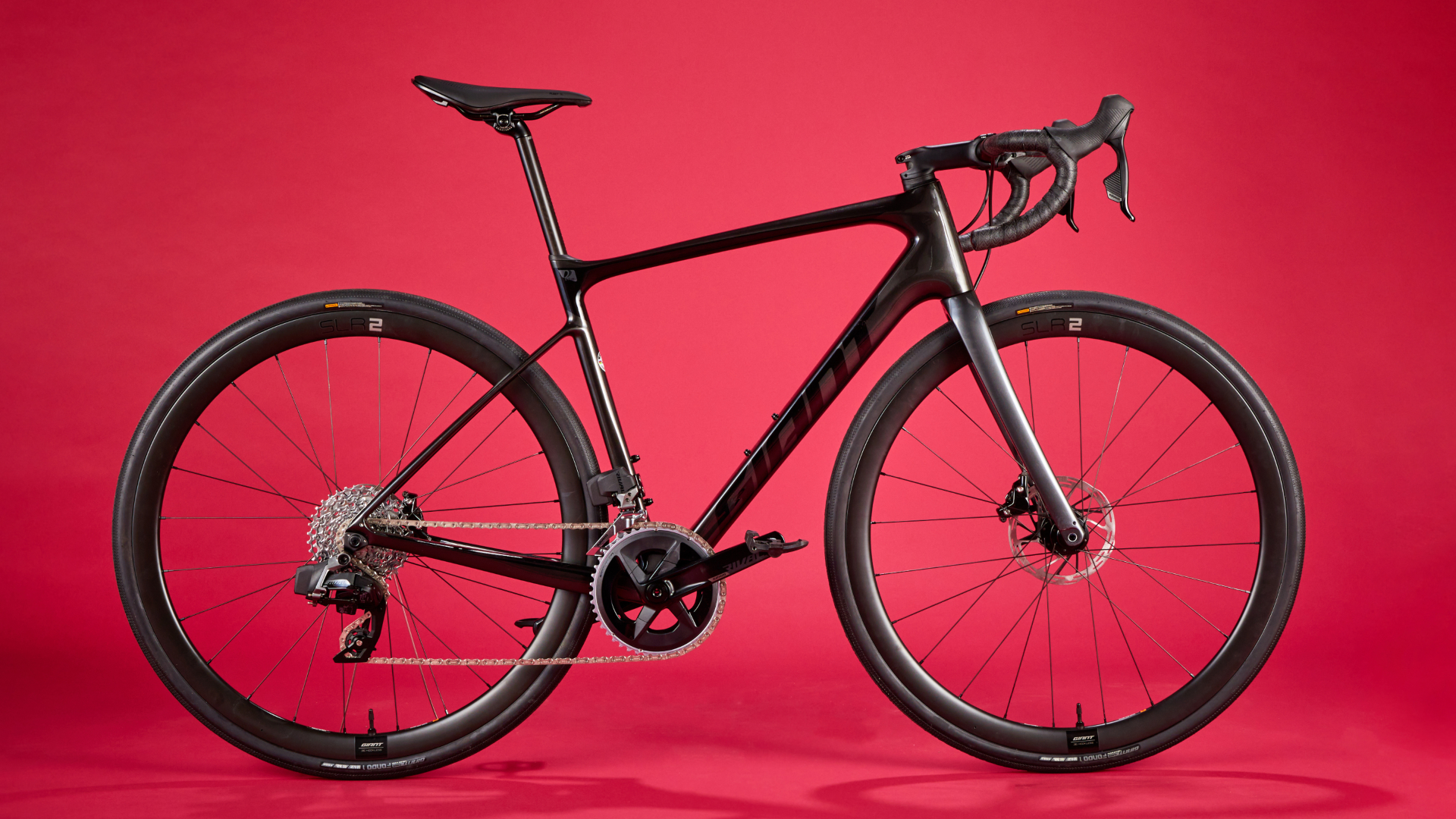
The Giant Defy is an excellent endurance bike. A jack of all trades, it’s comfortable for mile munching epics and for pressing on with a turn of speed. As ever with bikes from the Taiwanese manufacturer, it’s excellent value for money too.
-
+
Great value with carbon wheels and electronic groupset
-
+
Huge tyre clearance makes for a comfy ride
-
+
Fast on the flat and on rolling terrain
-
-
Not especially lightweight
You can trust Cycling Weekly.

Giant is a brand with a reputation for producing great bikes at a highly competitive price point. Part of this is down to the fact that Giant owns its own factory, rather than having to commission the production of frames from a third party. Quite the reverse, Giant is actually one of those companies that accepts commissions to produce the frames of other big brands.
The Defy is Giant’s road endurance platform, designed for longer distances and comfort – yet still with a certain emphasis on speed. After all, if you’re planning on ticking off huge distances, although comfort is one part of the puzzle, you’ll get further on a faster bike. Let’s take a look at how it stacks up.
Frame
Starting with the heart of the bike, the carbon frame incorporates engineered compliance along with the D-fuse seatpost to help smooth out the ride. It doesn’t flex quite like that of the Cervelo R5 – which visibly bends when just resting a hand on the saddle – but arguably the Defy doesn’t need it, with generous tyre clearances capable of taking rubber up to 35mm.
Perhaps if you’re finding yourself squeezing in tyres right around that mark you’d be better off on a race-oriented gravel bike. But bear in mind that those clearances also allow for a 32mm tyre to be run with mudguards, which is a winning combination for riding through a British winter.
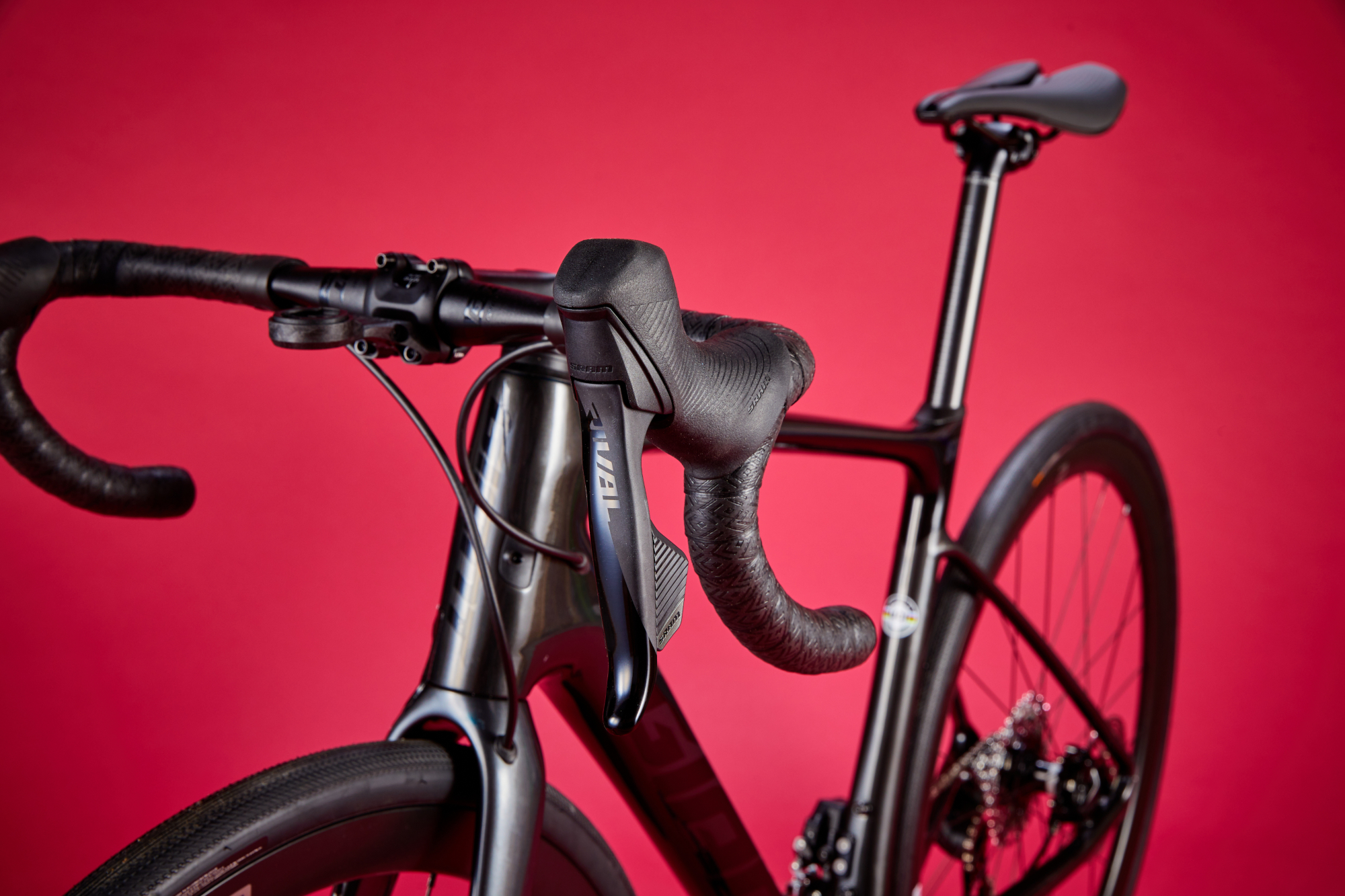
The cable routing remains proudly external around the cockpit, rather than being tucked inside the handlebars. There are those who prefer this setup for easier maintenance, but with the Defy Advanced Pro 2AX coming with an electronic/hydraulic groupset, there is really no need to be routing cables after the initial build – so they almost might as well be internal all the way.
To be fair, there are mechanical shifting options in the range, but I would say that once the cables run inside the frame to any extent, the damage is done regarding ease of maintenance (aside from in the case of electronic/hydraulic groupsets). Either fully in or fully out for me.
Another point in bug-bear bingo is the press fit bottom bracket. To be fair, creaking is less of an issue, so long as the frame is built to sufficient tolerances. But having to take a hammer to your frame to swap out a consumable part is never so fun anyway.
The latest race content, interviews, features, reviews and expert buying guides, direct to your inbox!
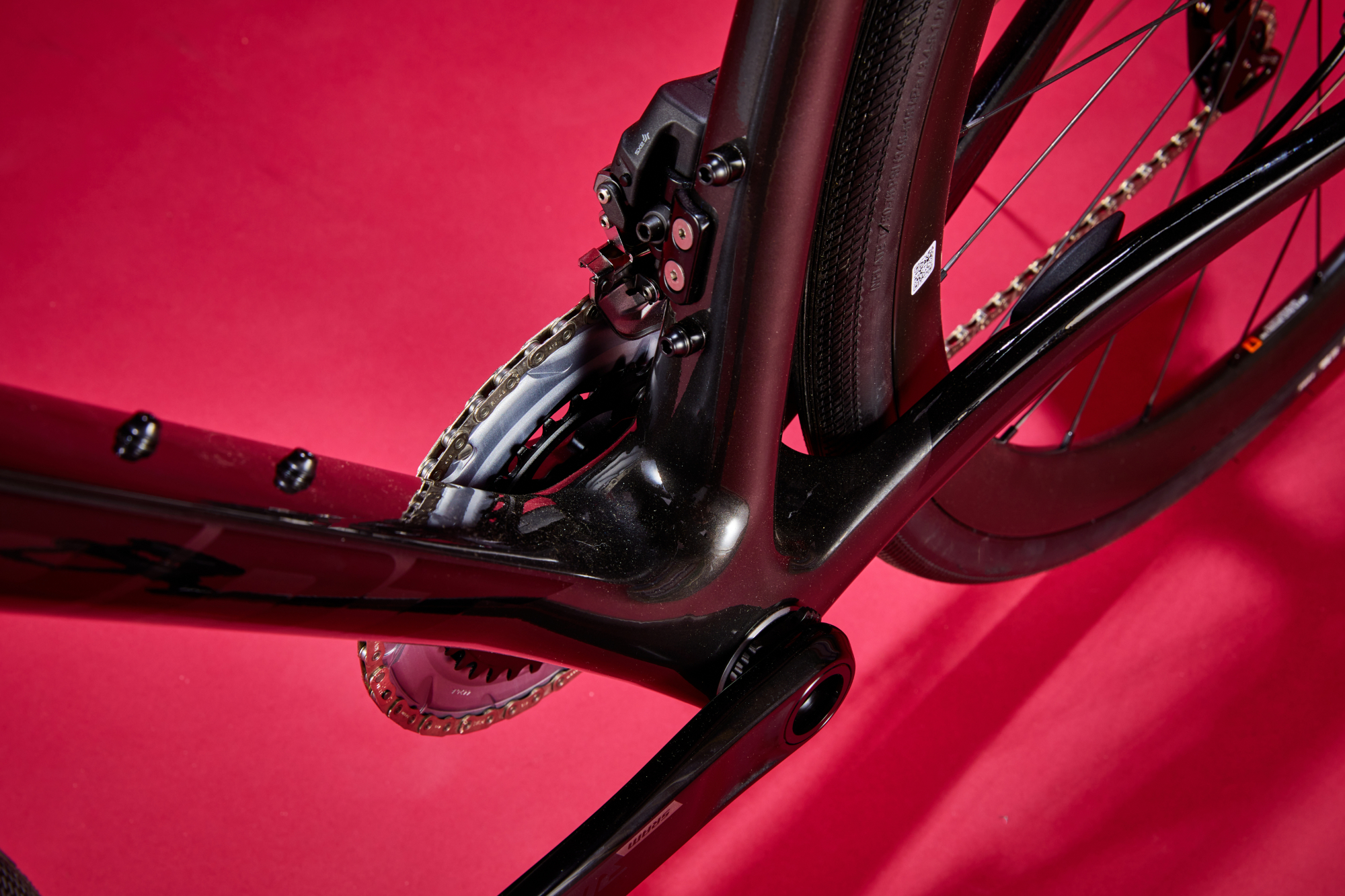
Coming now to the geometry, in this size medium, the stack is 567mm and the reach is 377mm, which is pretty middle of the road for an endurance bike. There are some more aggressive – such as the Canyon Endurace CF SL, which has a stack and reach of 557 and 376mm – and some more relaxed, such as the Trek Domane SL which comes in at 575 and 374mm, respectively.
So in terms of the rider position, the Defy Advanced Pro 2AX leaves a lot of room for experimentation. You’re not writing off certain approaches to endurance riding (going super aggressive or relaxed), although that said, if you do favour one extreme, you might not quite be able to reach it with the Defy.
This same balanced approach runs through most of geometry. With chainstays at 420mm, a bottom bracket drop of 75mm and a head angle of 72.5 degrees, the Defy slots in pretty much right between the Endurace CF SL (415mm, 73mm and 72 degrees) and the Domane SL (420mm, 80mm and 71.3 degrees).
Generally, longer chainstays, a lower bottom bracket and slacker head angle combine to make a bike that feels more controlled, more planted – but also a little less lively and quick to respond – than a bike which goes in the opposite direction.
Specification
Giant bikes have a reputation for being good value for money and this model doesn’t disappoint. Looking first at the rolling stock, these are Giant’s own SLR 36 carbon hoops, with a modern 22mm internal rim width and hookless profile. No prizes for guessing that their depth comes in at 36mm.
They’re shod with Giant Gavia Fondo 1 tubeless tyres in a 32mm width. They’re quite a robust tyre, I’d be more than happy running them through a British winter, but at the same time they’re not like the training rubber of old – they are all-rounders that can turn a respectable pace.
The carbon construction continues to the seatpost, Giant’s proprietary D-Fuse SL, but the handlebars are an aluminium model. With the stem being its own separate entity, refining your fit is a much cheaper and easier process than with a one-piece unit.
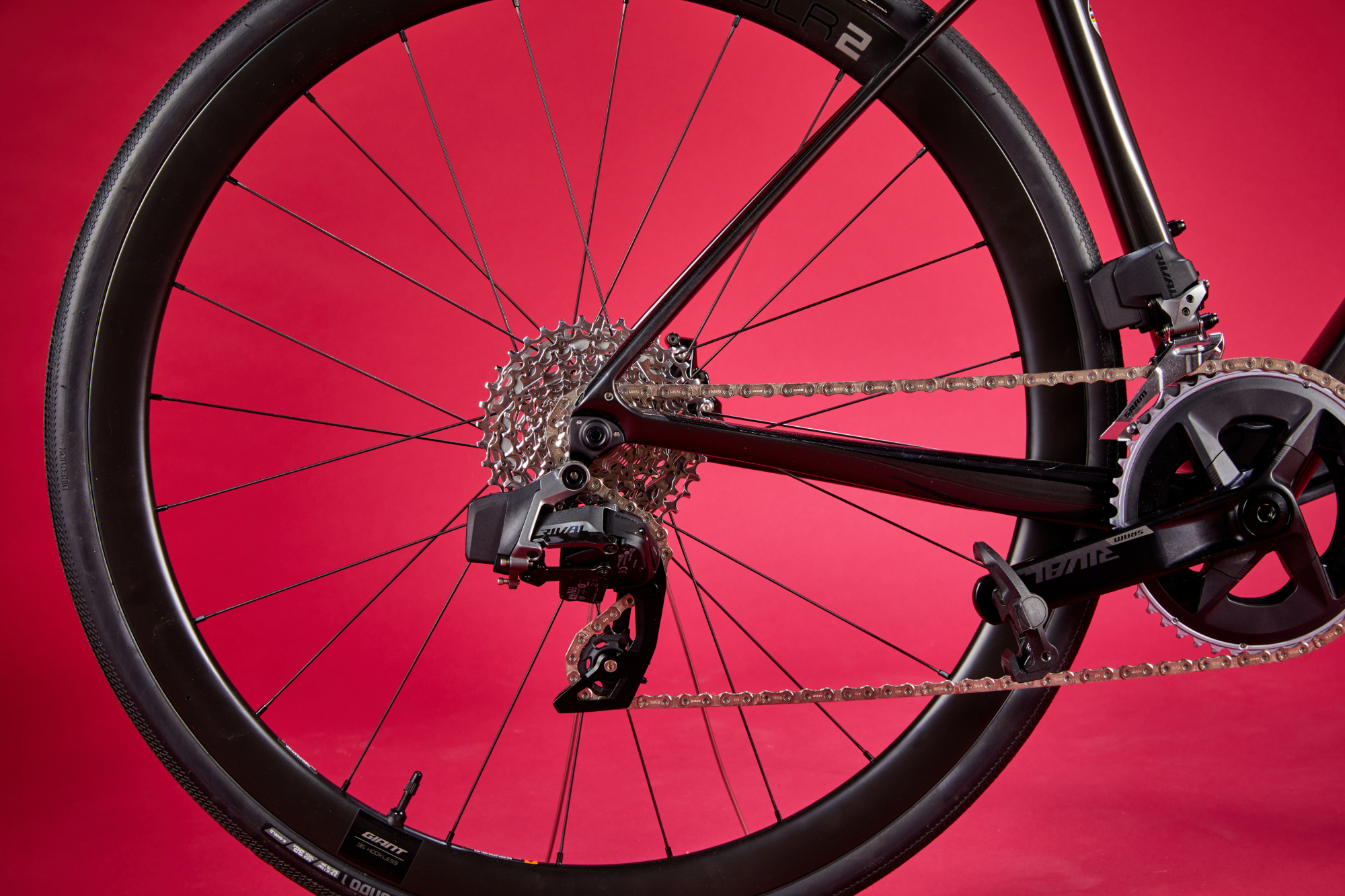
Coming now to the groupset, this is SRAM’s third tier electronic shifting and hydraulic braking Rival model. A 160mm rotor is placed on the front and 140mm at the rear. The gearing is extremely generous with a 46/33 crankset and 10–36t cassette.
This will provide ample gearing for both the climbs (especially the climbs) and the descents, but sacrifices a little on the jumps between the gears. Those fussy about their cadence might want to swap in a 10–33t, but for most people the stock setup will cover most riding.
Ride
The Defy is a really well measured endurance bike. Whereas some endurance bikes can push you into a certain style of riding – be that a super upright position and slowly plodding, or taking the form of essentially a race bike, but for longer courses – the Defy is an all-rounder that is happy leaning towards either of those positions, but not restricting you to either one.
The stock tyres do give it a bent towards that more longer distance and steady style of riding, straight out of the box. They’ve proven robust and perfectly capable of taking in some lighter gravel on un-scouted shortcuts that depart from the road. Run at plush low pressures, they’re super comfy too.
But with that said, they’re still nothing like a gravel tyre or training rubber from years gone by. Put in an effort and you can soon get up to speed. The response isn’t lightning fast, but you can tick over at a satisfying pace once you’ve gotten going.
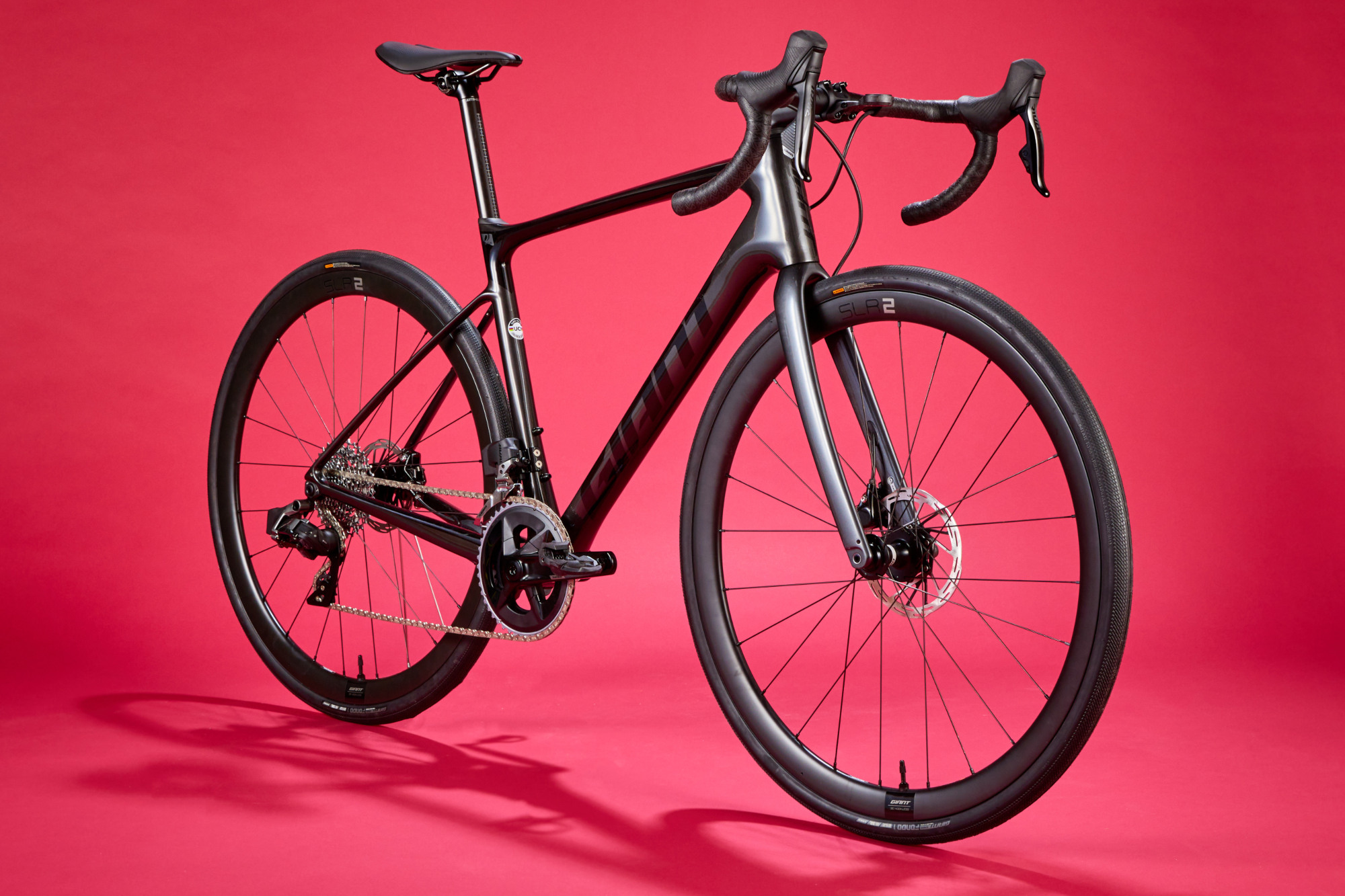
If you’re looking for a bit more of an injection of speed, swapping out the tyres for something around 28mm is a quick, relatively cheap and highly effective upgrade at getting more speed out of the bike.
In terms of the handling and the rider position, this occupation of the middle ground works very well too. It didn’t feel twitchy or skittish on switchback descents or on the shifting surfaces from those brief off-road exertions. But at the same time, it wasn’t lumbering or slow when giving it a bit more pep.
If you are looking for a bike that is just a little more forgiving than an out-and-out race bike, you could choose the Defy. But really you’d probably be happier on something a little more sharply focused, such as the Canyon Endurace CF SL, with its more sprightly geometry and lighter weight.
Equally, if you’re looking for a little more plush cushioning as you put in the long hours of endurance training, perhaps a model like the Specialized Roubaix would be more appropriate for you.
But if you wouldn’t pigeon-hole your riding in such a way, wanting to keep your options open for experimenting and experiencing a broader range of road riding, the Defy is an excellent jack-of-all-trades that you can bend to your will.
Value
At £3,599, the Defy is quite cheap for its carbon frame and wheels, 12-speed electronic shifting and hydraulic disc brakes. The Trek Domane SL 6, in contrast comes in at £3,900 with 11-speed mechanical shifting and aluminium rims – although it does boast fancy vibration dampening in the form of its isospeed decoupler.
An interesting comparison is with the Canyon Endurace CF SL 8, which comes in at £3,799, but is equipped with Shimano’s new 12-speed Ultegra groupset and aluminium wheels. Its claimed weight is about 400g less than that of the Defy.
For just £200 more, this alone is enough to warrant pause for thought. But considering the upgrade path that the Canyon provides you with, the argument is really quite compelling.
Depending on your frame size, with an upgrade to the wheels you should be able to drop the weight of the bike to 7.9kg whilst giving yourself an aero boost. Pulling that trick with the Defy would require quite a few ancillary upgrades – which would be more complicated and a fair bit more expensive.
But if we do only consider the stock set up, the Giant does come with deeper section carbon wheels straight out of the box, it is that bit cheaper, and the geometry is more of an all-rounder than the Canyon – so it’s horses for courses.
Verdict
Being an all-rounder, if you have very specific requirements, perhaps relating to the speed of the handling or the precise levels of comfort, then the Defy would likely not be the bike for you. But if you do have such a clear picture of what you’re looking for in an endurance bike, you probably didn’t need me to tell you that.

After winning the 2019 National Single-Speed Cross-Country Mountain Biking Championships and claiming the plushie unicorn (true story), Stefan swapped the flat-bars for drop-bars and has never looked back.
Since then, he’s earnt his 2ⁿᵈ cat racing licence in his first season racing as a third, completed the South Downs Double in under 20 hours and Everested in under 12.
But his favourite rides are multiday bikepacking trips, with all the huge amount of cycling tech and long days spent exploring new roads and trails - as well as histories and cultures. Most recently, he’s spent two weeks riding from Budapest into the mountains of Slovakia.
Height: 177cm
Weight: 67–69kg